So you’ve decided to propose! Congratulations. It’s a big decision, and once you’ve made the step of deciding to marry your partner, most men are faced with the next big decision: how to buy an engagement ring. After your car, an engagement ring might be one of the biggest single purchases you make, and there are lots of things to consider along the way.
History of Engagement Rings
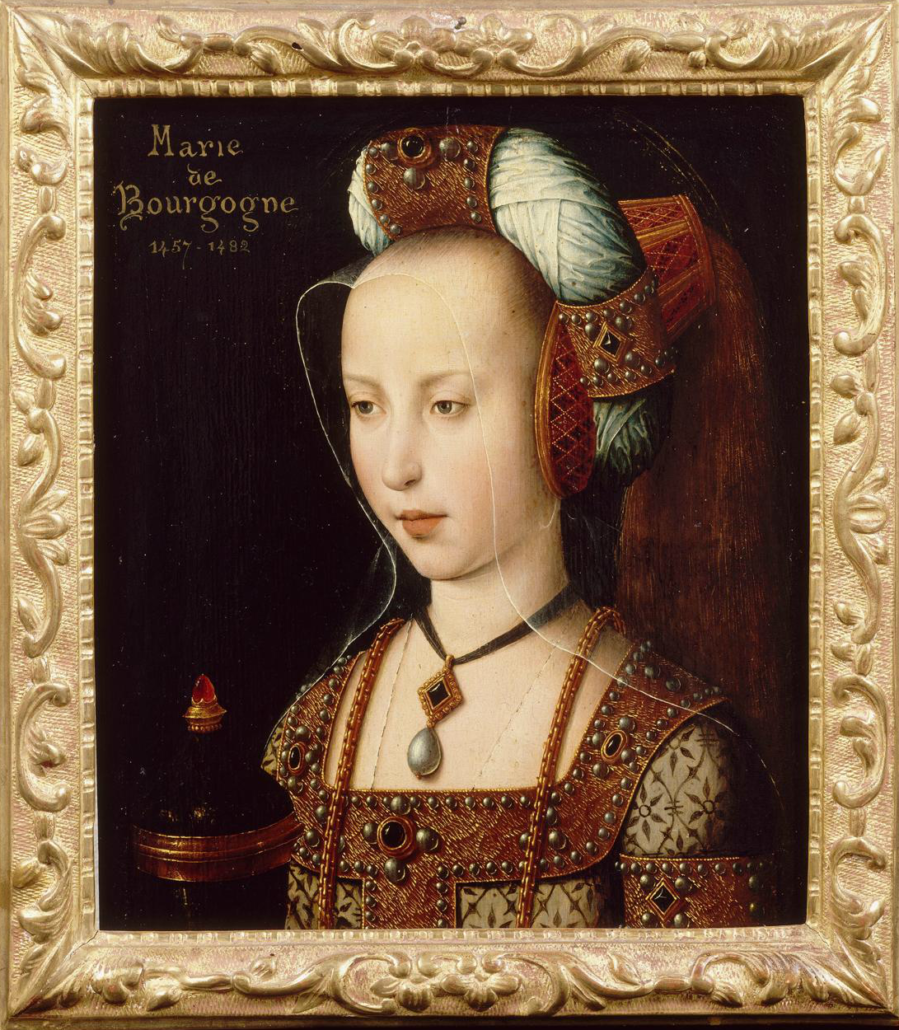
Unfortunately, the history of engagement rings is far from romantic. Ancient Romans used them as a symbol of ownership, but it wasn’t until the 15th century that the first use of a diamond engagement ring was recorded. Archduke Maximilian of Austria gave a diamond ring to his intended, Mary of Burgundy, sparking a craze for diamond rings, then a rare stone, among the nobility. This aristocratic exclusivity persisted until the close of the 19th century when diamonds were discovered in quantity in South Africa.
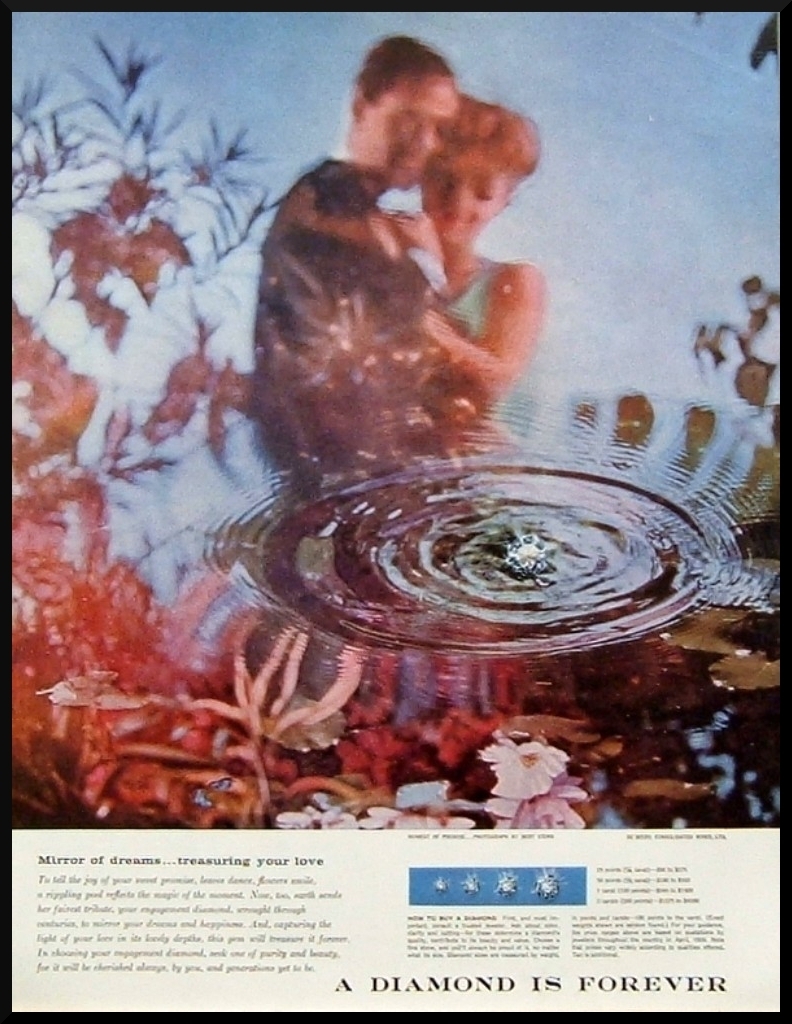
What followed afterward has become one of the world’s most noteworthy marketing campaigns. DeBeers, the diamond cartel that held a virtual market monopoly for the whole of the 20th century, sought to manipulate slumping demand for diamonds after the Depression and World War II through advertising. In 1947, the “a diamond is forever” campaign successfully altered America’s tastes to establish diamonds as the stone of choice for engagement rings. The campaign was named as the best advertising campaign of the 20th century by Advertising Age.
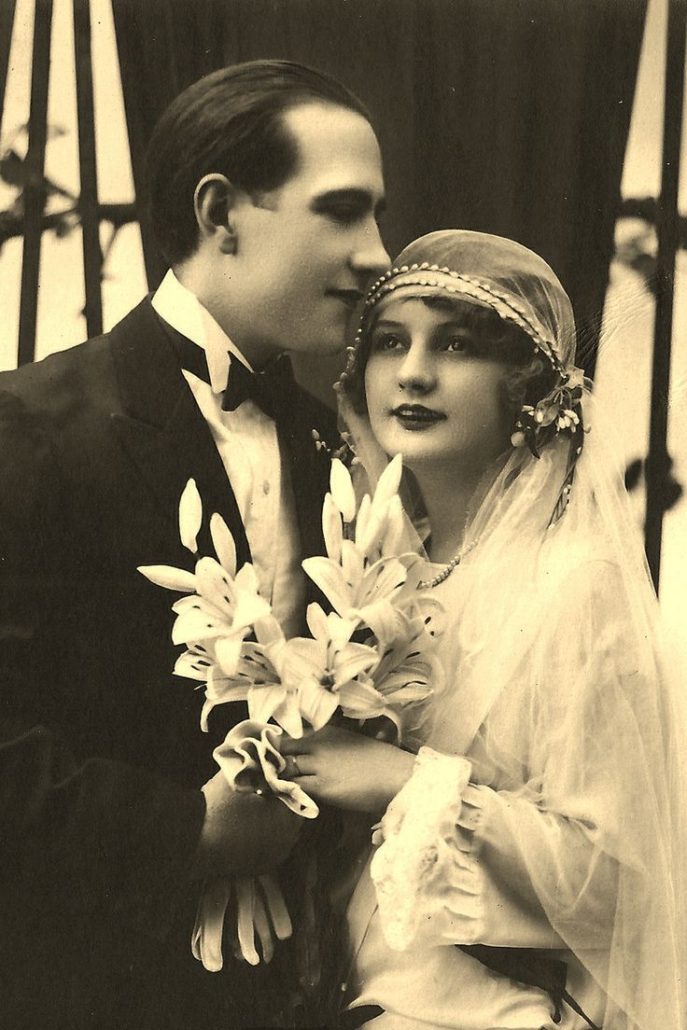
Controversies About Engagement Rings
To begin with, engagement traditions vary widely by culture, and one tradition is not more valid than another. Some northern European countries exchange simple matching bands, while other Europeans prefer semi-precious stones; often these rings are worn on the right hand rather than the left. In China, money or other goods may be exchanged for an engagement rather than a ring, though the practice is gaining in popularity.
Despite the ubiquity of engagement rings in North America, there are many criticisms of the practice that are worth addressing before you seriously commit to buying one, if that is your choice.

Blood Diamonds
Diamonds are a natural resource that is often mined in violent, poor countries in Africa for the purposes of financing a war or an insurgency. The Kimberley Process Certification was designed in 2000 to create a market of certified conflict-free diamonds, but the process is fraught with corruption. As a result, it is nearly impossible to guarantee that a Kimberley certified diamond, or any other diamond, is conflict-free. The Kimberley Process also does not address other issues, such as environmental degradation, human rights abuses, poverty, or other forms of violence. The only country-wide exception to this is Canada, which inscribes each diamond with a unique identification number in addition to adhering to Canadian environmental standards and the Kimberley process. Retailers such as Brilliant Earth have popped up to exclusively sell diamonds that meet these high standards, but even this system isn’t fraud-proof.

Lab-Created Diamonds
Diamonds have been created in labs since the 1950s, but it wasn’t until recently that these diamonds have actively been marketed as less expensive “eco-friendly” and “conflict-free” alternatives to mined diamonds. Lab-created stones are chemically identical to their mined peers, but they shouldn’t be confused with simulated diamonds (such as Moissanite), which look like diamonds but are not made of the same material. Many retailers claim that lab-created stones can be 30-40% less expensive that natural stones, but that seems to be an exaggeration; two identically graded stones (one lab-created and one mined in Canada) on Brilliant Earth only resulted in a 16% price difference. At the very least, it will pay to compare lab-created and mined diamond prices in your area if you are seriously considering one.
While lab-created stones have many advantages, they are considered to be “inauthentic” by many, which can be risky if you don’t know what the intended recipient’s opinion is.
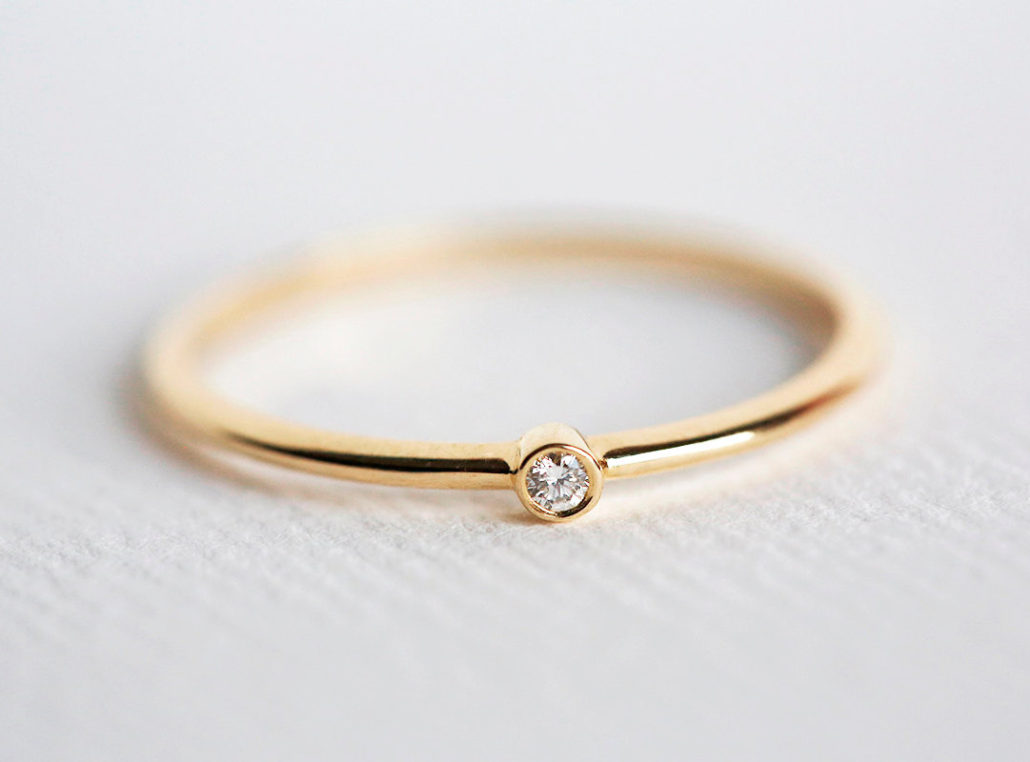
Materialism
Engagement rings represent many things, including the decision to make a lifelong commitment and your love for your partner, but they have also become a symbol of materialism for many. Just look at the media’s obsession with celebrity engagement rings and it doesn’t take a stretch of the imagination to see how the size of a ring can be correlated with the “value” of the giver’s love.
The fact is that no matter what you buy, people will probably judge you for it. Too small, and you’re cheap or you don’t love her “enough”. Too big, and you’re showing off. However, in the long run, remember that the only two people you need to please are yourself and your future spouse because you cannot control what other people think.
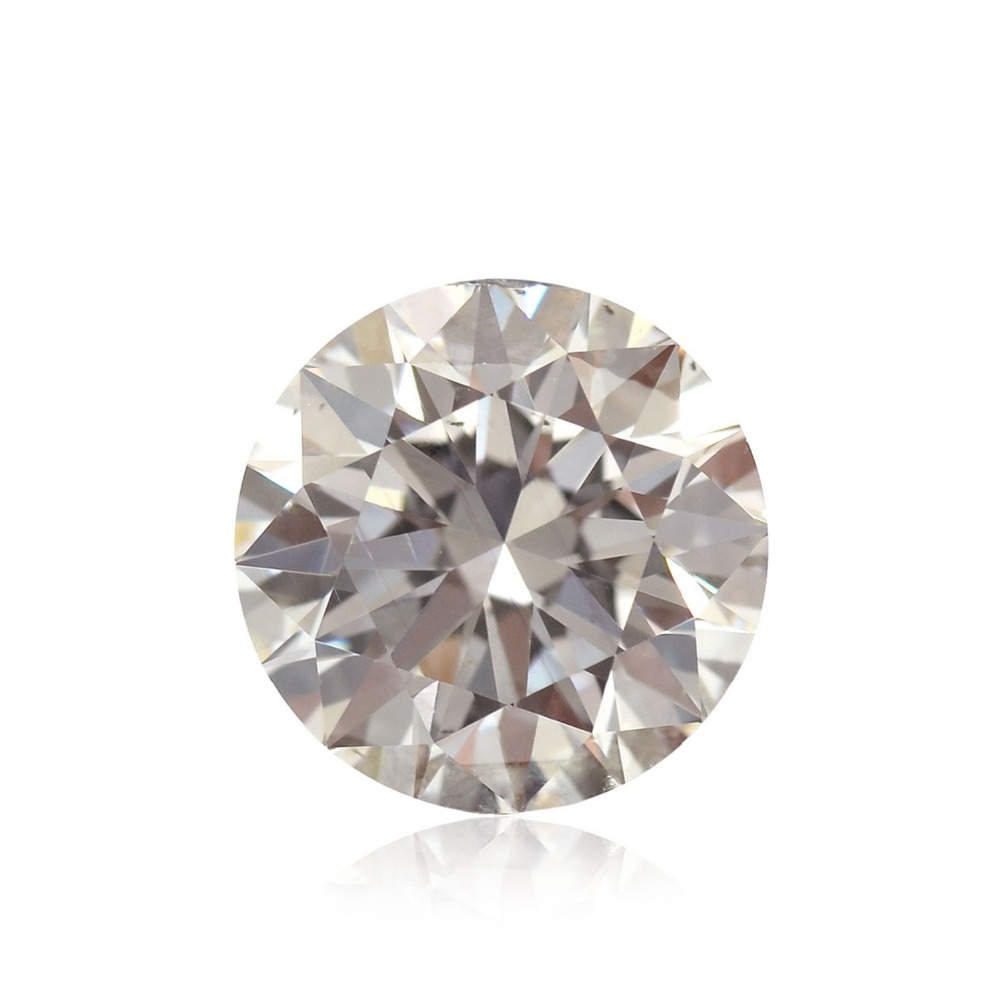
Before You Buy
Before you begin the process of shopping for a ring, there are 3 key decisions to make first. Starting in the jewelry store is rarely in your best interest!
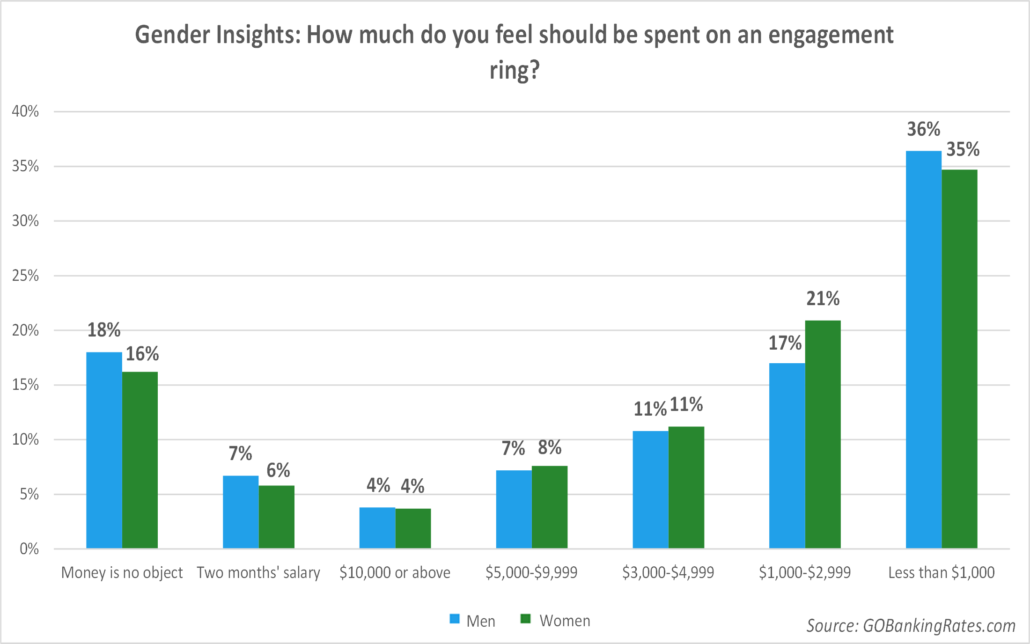
Step One: Determine Your Budget
The old adage is to spend “two months salary” but forget that – you should buy what you can afford. In fact, this rule was made up out of thin air by Diamond company DeBeers in the 1930s. At the time, DeBeers controlled about 60% of the world’s rough diamond output and they had just overcome the depression, so they linked diamonds to engagements and told people how much they should spend, too.
In 1930, they told men to spend one month’s salary, and by 1980 it became 2 months’ salary.
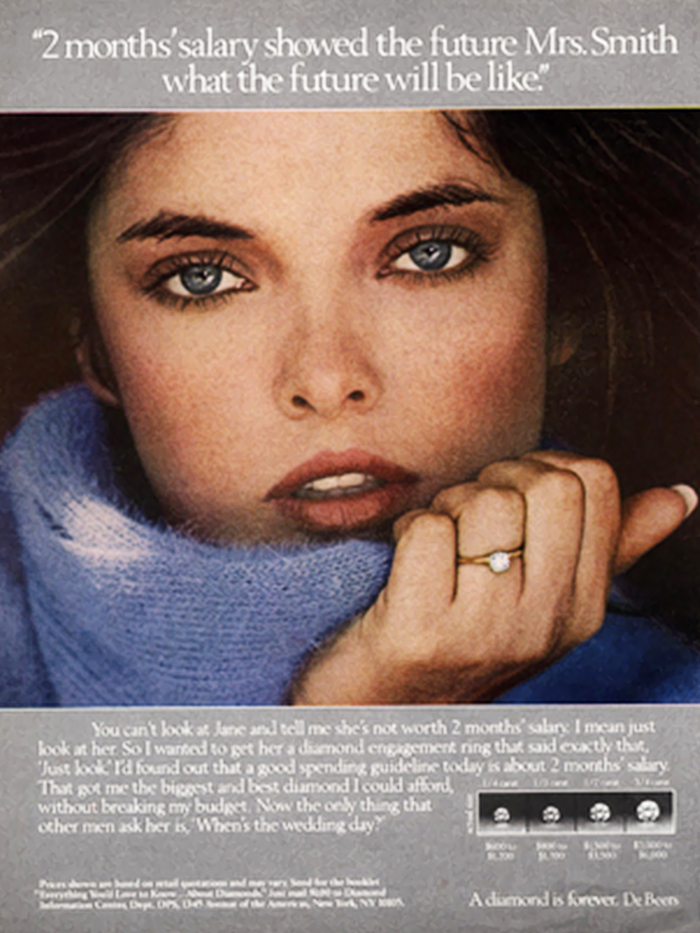
As of 2013, the average ring was purchased for $4,000. These days, you should take into consideration your salary in addition to any long-term debt, such as a home or student loans. The ideal scenario would be to pay for a ring with cash. Credit cards, and the lines of credit offered in the jewelry store, are usually very expensive if you can’t pay them off immediately. If you are able to get a jewelry line of credit in store for a 0% APR, it may be worth giving it a go if you can afford to pay it off before the promotional period expires. However, be aware that store employees will likely be incentivized to sell you credit, so be careful to read the fine print.
Once you’ve set you budget, your biggest challenge will be to stick to it. There will always be a slightly bigger setting, or a slightly better diamond to look at in the store, so stick to your guns.
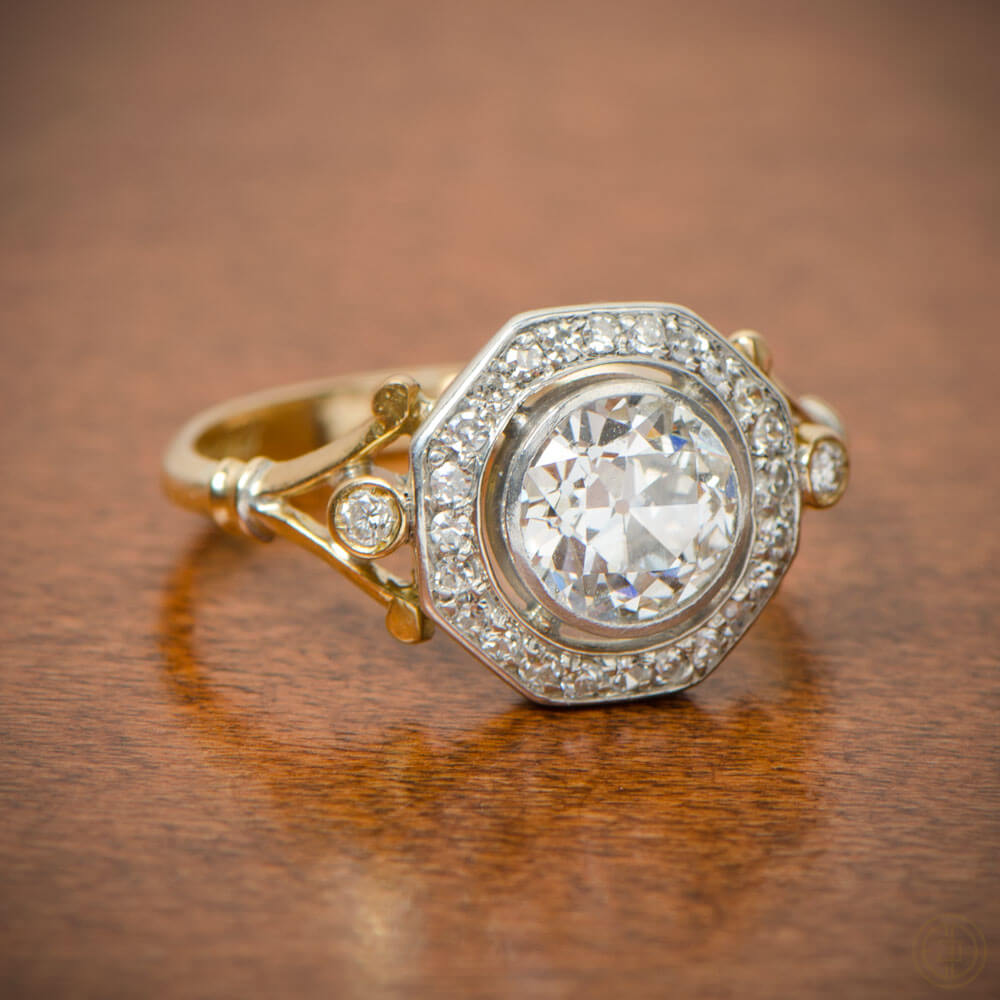
Step Two: Determine What You Want to Buy
Sounds simple, right? Not so simple. You’re probably familiar with the famous “4 C’s” of diamond buying – cut, clarity, color, and carat weight – but before you commit them to memory, start by asking yourself some questions:
- What do I want? You may have strong opinions about what you want for a ring or you may have none at all, but it’s better to figure it out before heading into the store. Start with the stone. Do you want a diamond or something different? Consider another precious stone like a sapphire or emerald, or even a semi-precious stone like aquamarine. Then consider the setting material. It could be white gold, yellow gold, rose gold, or platinum. The latter material is the most expensive and the most durable, but look to buy the best quality you can afford within your budget.
- What does your partner want? It never hurts to find out as much as you can, which may include directly asking or just keeping an eye out for clues, such as comments on other people’s rings or insights from a close friend. Consider what an engagement ring means to your partner. They will be the person to wear it, every day, for the foreseeable future, and it may the only piece of jewelry they wear daily.
- Do I want to buy a new, estate or antique ring? Many men don’t consider buying anything other than a new piece for an engagement ring, and that’s a shame. You can often buy a nicer ring for the same amount of money if it’s estate (which is the nice way of saying pre-owned) or vintage. You won’t be able to create something custom this way, but it a great option to get more bang for your buck if you don’t mind getting something that isn’t brand new. Frankly, no one will probably every know, because jewelry doesn’t show it’s age the way other things do.
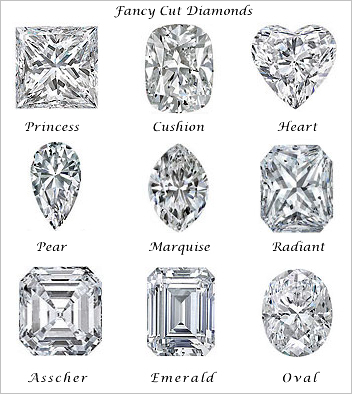
Step Three: Learn the Basics of Buying Precious and Semi-Precious Stones
Diamonds are usually the first choice for engagement rings, and due to their high price, it pays to learn as much as you can about them before buying one. You should always buy the stone and the setting separately since it gives you the chance to see the stone from all angles before it is set in the finished ring. A pre-set ring can hide the true size of the stone or inclusions under the setting that might not be reflected in the price.
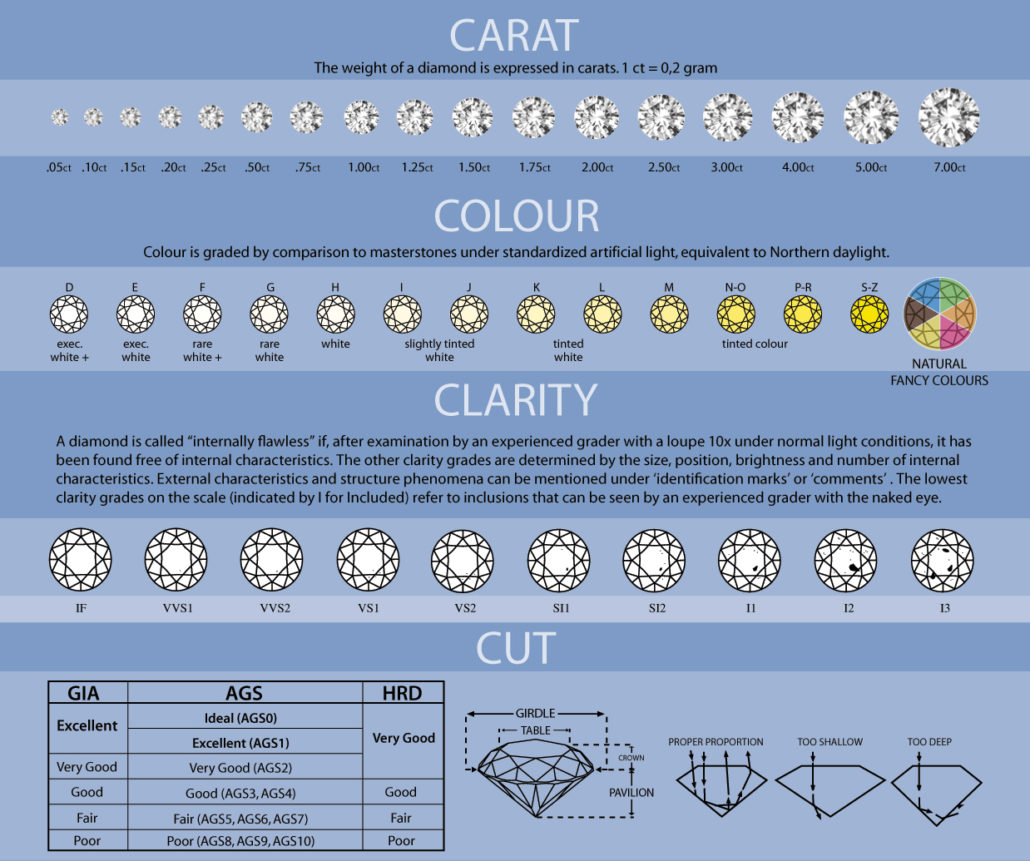
If a classic diamond is your choice, then learn the basics of the 4 C’s, but remember that what the diamond looks like in person matters the most. You can play around with different combinations of cut, clarity, color and carat weight until you find a stone that looks great and fits your budget. Getting a “perfect” stone can be very expensive with a minimal payoff in terms of beauty over a more middle of the road stone. Each cut diamond is cut and then evaluated to determine the grade it receives in each of the 4 C’s. While a carat measurement is a weight, the remaining 3 components are grades based on a scale.
- Cut grade is the quality of the final shape of the stone, which includes the overall finish, the proportions, and how well the stone’s facets refract light. This grade is considered to be the most important one in determining a diamond’s beauty, and the grades range from Ideal to Poor.
- Clarity grade reveals how clear the diamond is, with regard to internal flaws known as inclusions. Clarity is graded at 10x magnification because many flaws are small, but the most important thing is how the stone appears to your eye and how it looks in a setting. Large visible or black flaws will instantly draw the eye. The clarity scale is as follows: Flawless, Very Very Slightly Included (VVS1 and VVS2), Very Slightly Included (VS1 and VS2), Slightly Included (SI1 and SI2) and Included (I1, I2, and I3).
- Color grade represents the lack of color, rather than the presence of color, as the hallmark of quality in a stone. A colorless stone is the highest value, and the lowest letter on the grading scale. D and E graded stones are colorless, and they proceed to become more colored as they advance down the alphabet. G-J are near colorless, K-M are faint yellow, N-R are very light yellow, and S-Z are light yellow.
- Carat weight is the physical weight of the stone measured in units known as carats. A larger, deeper-cut stone may not appear larger than a shallower cut peer for this reason.
Other Precious Stones
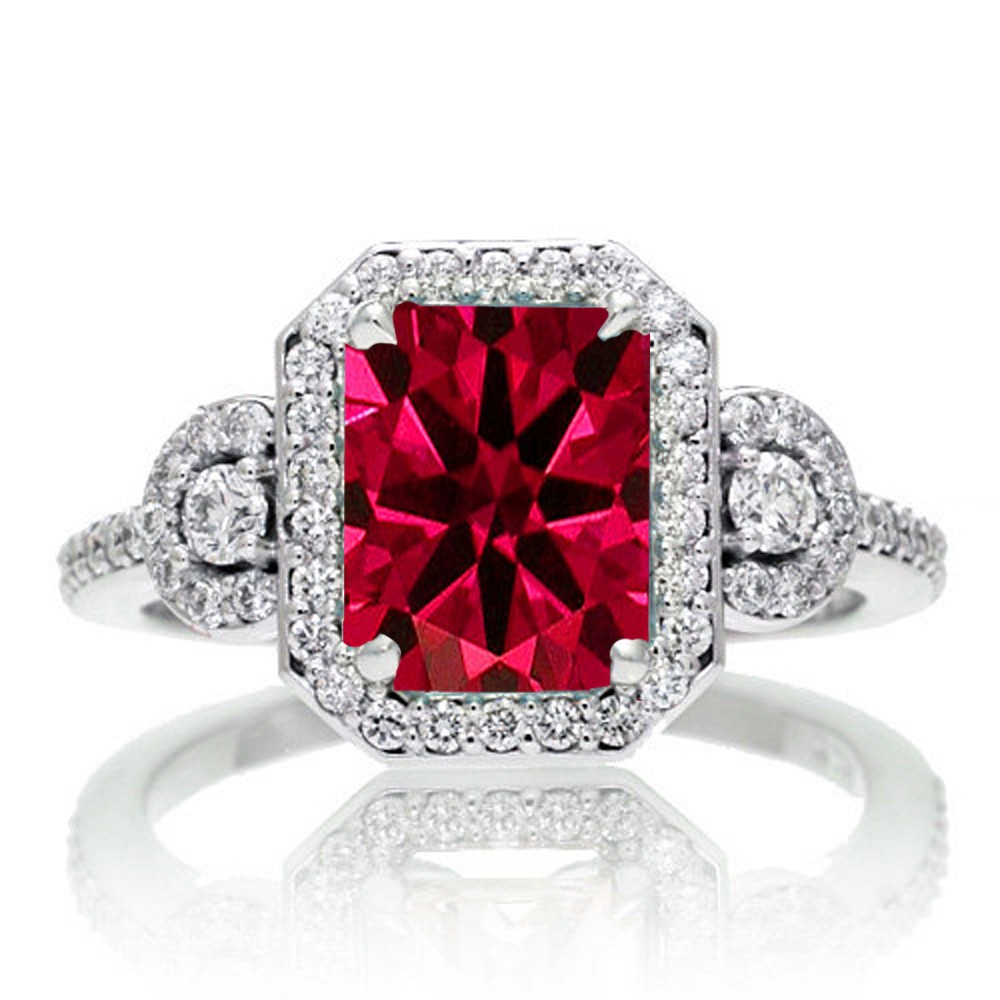
Prior to 1930, diamond engagement rings were not all that common. In 1940 just 10% of engagement rings contained diamonds, so don’t feel pressured to get a diamond engagement ring.
Other stones, such as precious emeralds, sapphires, and rubies or semi-precious stones such as aquamarine each have their own quality hallmarks that vary from diamonds. They will still be weighed in carat weight and use a similar cut naming system, there is no standardized grading system for colored stones, so it will be even more important to see the stone in person. The big three precious colored stones are:
- Rubies. Rubies are the most expensive of the colored stones, as high-quality stones over a carat are very rare. They are composed of the mineral corundum with traces of the element chromium, which gives it the signature red color. The color is the most important factor affecting the value of a ruby, to the point that a too-light ruby is considered a pink sapphire. Clarity is the next most important factor. Inclusions will bring down the value of a ruby, but note that inclusion-free stones are almost non-existent.
- Sapphires. Sapphires come in many colors (and rubies are merely a red sapphire) but for the purposes of an engagement ring the most desirable sapphire is blue. Like rubies, color and clarity, in that order, are the most important factors to consider. Note that deep blue sapphires will look slightly darker in the setting due to the light restriction. In addition sapphires are heavier than diamonds, so a 1 carat sapphire will be smaller than a 1 carat diamond.
- Emeralds. As with sapphires and rubies, color and clarity are the most important characteristics of emeralds, but they do vary from those stones in important ways. Sapphires and rubies are a 9 of 10 on the hardness scale, emeralds are more brittle. Eye-visible inclusions are accepted to be present even in high-quality emeralds, as the stones all have significant fractures. Stones that pass through the GIA receive ratings on the degree of clarity enhancement: minor, moderate or significant, though it’s not an actual clarity grade. Look for a true green to a bluish-green colored emerald.
- Tips for buying colored stones:
- Since magnification is not used with colored stones, look for “eye-cleanliness”, or a stone that is free of inclusions to the naked eye.
- Try to buy the purest color on the spectrum of colored stones; red, green and blue tones should be rich, saturated, and consistent through the stone.
- Like other stones, colored stones see a jump in value over 1 carat. Consider buying a stone just under a carat if that’s around your budget point.
- Almost all colored stones on the market are heat treated to reduce inclusions and improve the color. Non-heat treated stones are very rare and will command a much higher price. Your jeweler is required to disclose how a stone was treated, so make sure to ask.
- Since diamonds tend to be the mainstay of the jewelry business, you may have to look around to find a good local resource for colored stones.
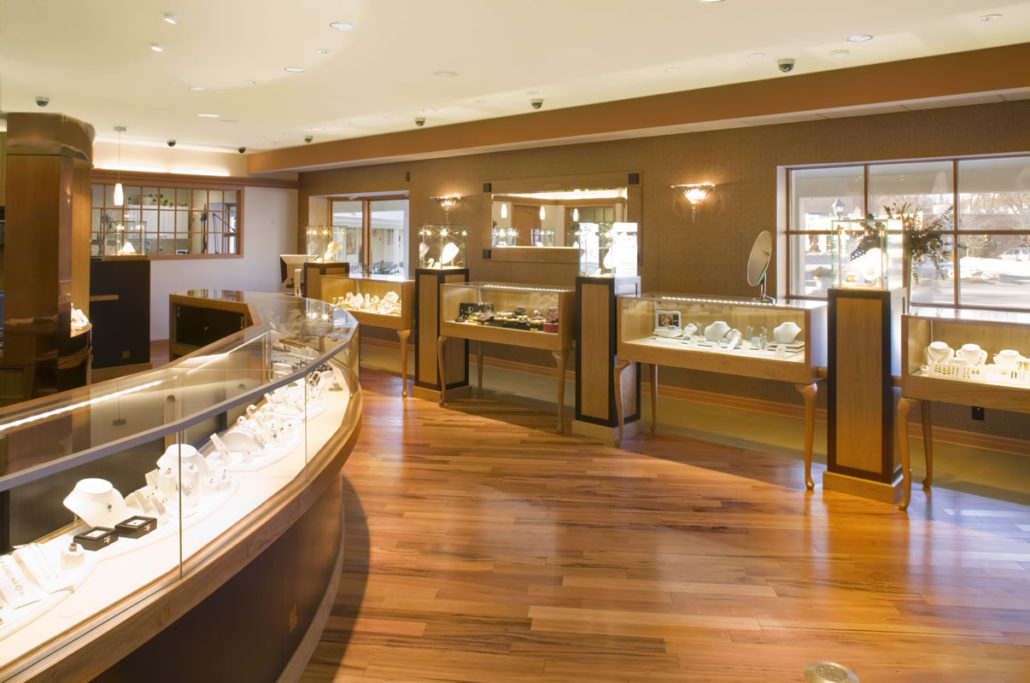
Buying the Ring
Now that you have a budget, know what stone and material you are looking for, and have learned the basics of buying a precious stone, it’s time to begin shopping. The options include online, in-store or from a big-brand name jeweler like Tiffany’s or Cartier. There are many pros and cons to each, but it likely makes sense to look at them all before making a decision.
Online:
- PROs:
- Supposedly you can get a “better” deal (but apples-to-apples comparisons are nearly impossible)
- The stone selection is usually bigger and more visual than at a store
- You won’t have to deal with high-pressure sales tactics
- Pricing is clear and visual
- Clear-cut returns policies
- CONs:
- You can’t see the setting or the stone in person;
- It is difficult to visually compare stones;
- You have to be willing to self-educate;
- Diamonds are difficult to photograph
- Prices are set with no room for negotiation
Independent or Local Jewelry Stores:
- PROs:
- The opportunity to build trust with a local jeweler for the long term
- The staff can provide guidance about how to get the most for your money
- Prices are negotiable
- Your purchase supports a local business
- They can probably do custom-made rings
- You can see all the settings and stones in person
- CONs:
- The stone selection is usually smaller
- You can only see a few stones at a time
- Staff are often paid on commission
Big Brand Chains
- PROs:
- You can see all the settings and stones in person
- Bigger selection than smaller independent stores
- CONs:
- Bulk purchasing can result in lower quality
- Bulk purchasing also means their settings are not very unique
- Staff are often paid on commission
- Staff are more like retail workers than jewelry experts
- Allegations of fraud at Kay Jewelers
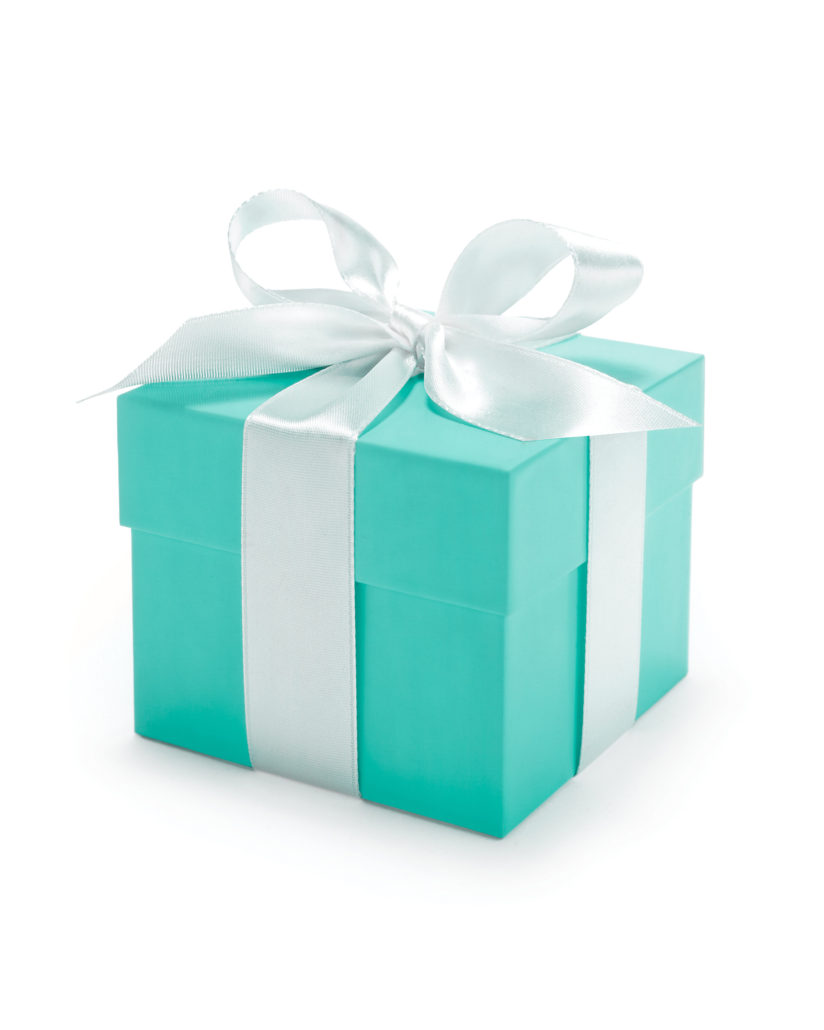
High-End Retailers Like Tiffany’s or Cartier
- PROs:
- The infamous baby blue and red gift boxes are sure to go over well with your intended
- They use the absolute best quality diamonds out there
- CONs:
- Expect a significant price markup. Tiffany’s quotes a simple 1 carat solitaire as starting at $12,600; a similar piece from Blue Nile retails for half that price
- Brands aren’t a visual characteristic of the ring
- Their designs are no longer exclusive; it doesn’t take long for chain jewelers to copy and reproduce their designs
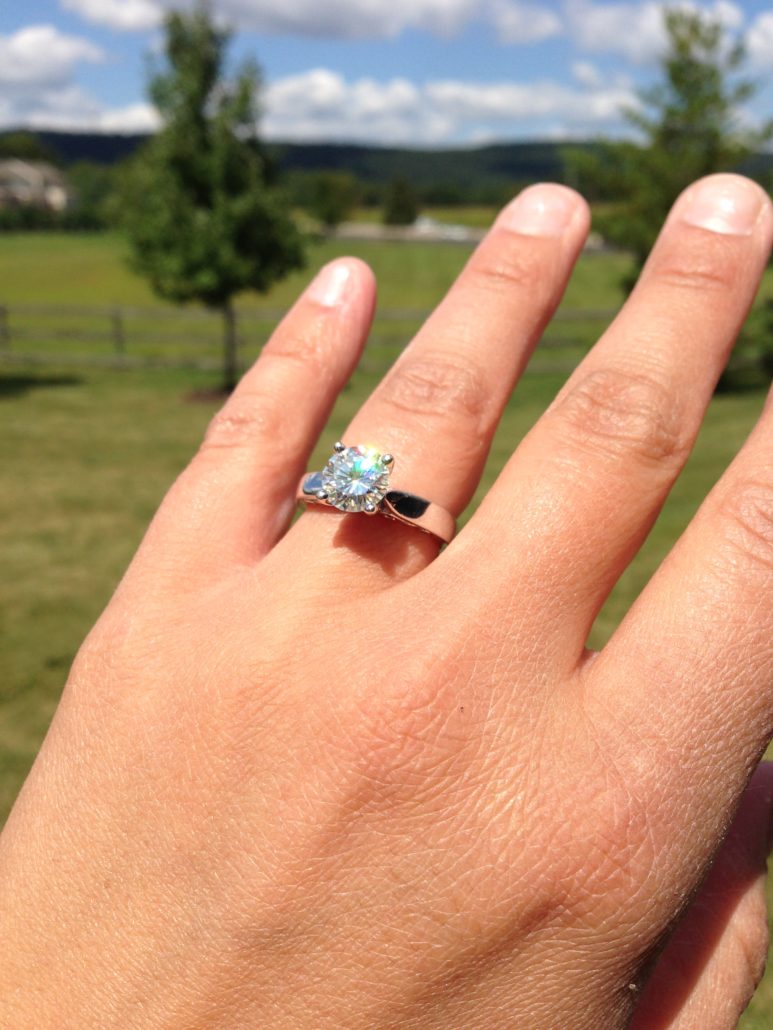
Final Tips
- DON’T – and we mean never – buy on the first trip to the store. Take the time to consider, comparison shop, and bargain.
- DON’T buy a ring with a pre-set stone, which can hide the true size or imperfections in the stone. Ask to have it removed so you can inspect it first.
- DO spend the extra money to have your purchase independently appraised by a local expert, but DON’T ask your jeweler for a recommendation. DO your own research. DON’T buy from a store that won’t let you make a return after a second-party appraisal.
- DO act confidently in the store. You may be a newbie to jewelry, but an in-control person is less likely to be duped by a jeweler. DO use the knowledge you’ve gained in this article to ask probing questions at the jeweler.
- DO play hardball with the salesperson; there should be room for negotiation.
- DO learn common ways that people get cheated, such as artificially coloring stones like sapphires and rubies or holding them out as natural rather than heat treated.
- DON’T fall for the “see it in the sunlight” line jewelers like to use – even a poorly cut diamond will sparkle in the sun.
- DON’T fall for the “it’s an investment” line either. It won’t increase in value at a regular rate every year, and it’s not meant to be resold, so don’t consider it an investment. It’s a one-time expense that shouldn’t be part of your retirement planning.
- DON’T believe that all documentation and stamps are true. They can be faked, so ask for “proof of provenance” for an antique piece and get an appraisal for everything you buy.
- DO propose within the return window if you are concerned she won’t like your choice. You can always go back and look together.
- DON’T think you have to propose with a complete ring. If you want to preserve the surprise but want her input, buy a center stone and have it set in a temporary setting. You can go back with your fiancee to pick out the final setting.
Conclusion
Best of luck in your search for an engagement ring. Now all you have to do is propose!
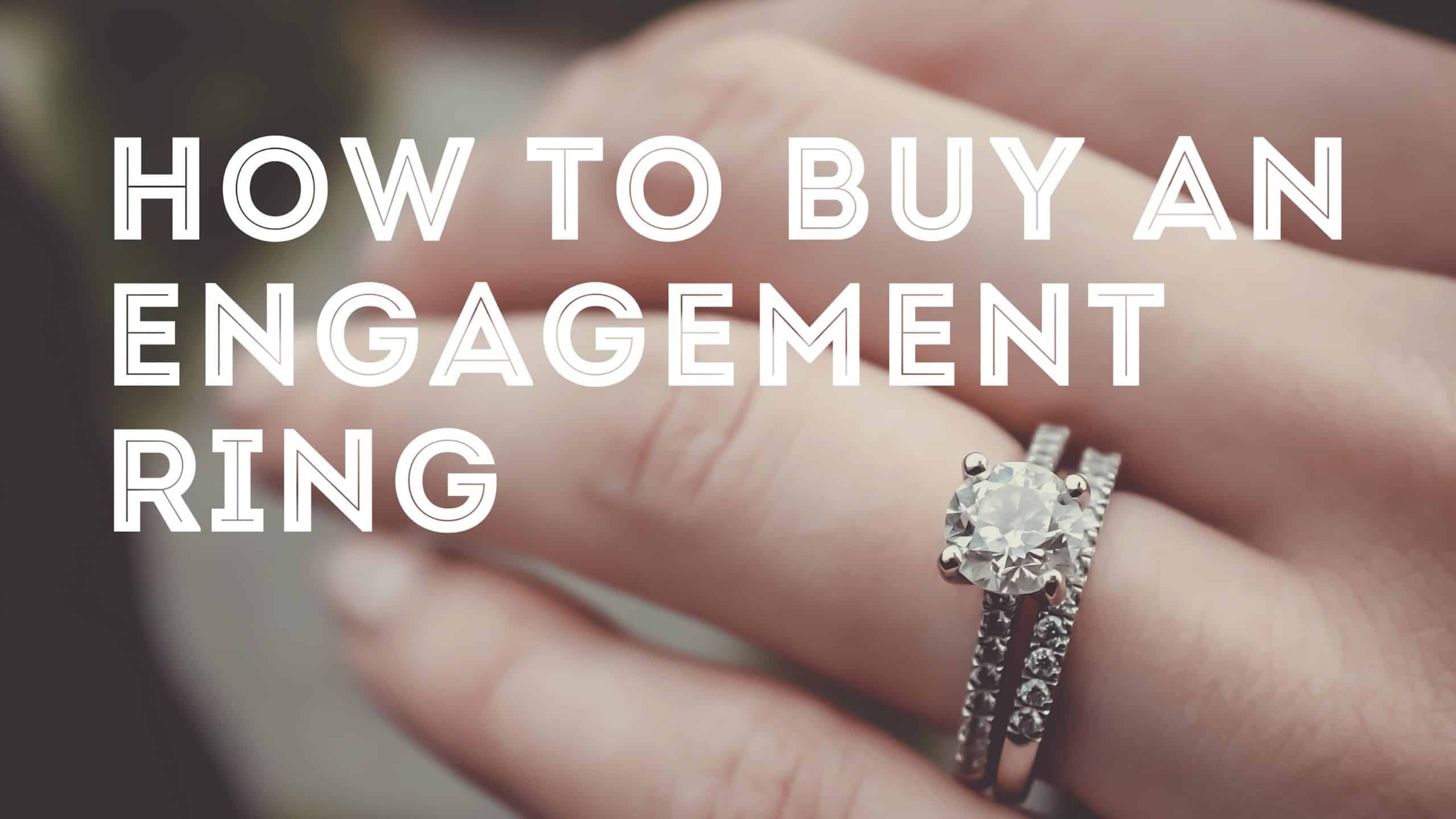

Great article, and comprehensive as well.
Or, one may do as I did, since I proposed before I purchased her ring, and that is, take your fiancee to her favorite jewelers, give her a budget, and relax as she picks out her ring.
Some may balk at this approach, for a variety of reasons, however, one’s fiancee acquires the ring she wants, there is no anxiety for either party, she doesn’t pretend she approves, you have peace of mind knowing her ring is one she will cherish, etc.
This approach worked out so well for us, its carried over to Christmas, birthdays, anniversaries, Valentines Day, etc.
No anxiety, no shopping (except for a surprise gift or two and usually through Amazon. Amazon wraps and includes a gift card for a small additional fee).
We couldn’t be happier.
Note: This approach works best when one’s fiancee is frugal, practical, and doesn’t view spending one’s money as sport.
Hi Michael, thank you for sharing your experience.
Worry about allegations of fraud at Kay Jewelers but buying online is perfectly safe?
Bespoke custom jewelry stores are out there too. I had a lovely experience working through some of my own sketches with a local custom jeweler (Asheville, NC). Designing a ring from scratch significantly increased the quality of the ring that I budgeted for, and it gave me the chance to find the perfect stone because I wanted to buy an antique loose diamond. Plus, my fiancé knows that nobody else will have a ring anything like hers and loves telling people about how her future husband designed her ring – which is really heartwarming for me.
Hi Sven and Teresa,
I really like this article; it is very informative. We searched the internet to find much of this information before purchasing my engagement ring. I like that you mentioned moissanite. My own engagement ring is moissanite. I don’t think of it as a diamond simulation so much as a beautiful gemstone that happens to be clear. The first time I saw moissanite, I was amazed at how sparkly it was. The beautiful sparkles of the stone was what originally drew me to moissanite, and the cost savings and ethics were also bonuses. I have also had multiple people tell me my ring is one of the prettiest diamonds they have ever seen. I respond by telling them that that’s because my ring isn’t a diamond.
Thank you for the article and how it covers the ethical dilemma surrounding engagement rings.
You are welcome and thank you for sharing.